ROOTS AND WOOD
ARTISTIC ROOT CARVINGS
The wood carvers of Tikoloshe Afrika do not hesitate to work the hardest wood there is. Therefore they rely on the best tools made of first grade steel and professional quality appliances imported from overseas. Knives are used for fine carving by hand. But most tasks are done by specific carving tools like gouches and rubber hammers. By far the most popular tool is the straight-forward grinding machine. A variety of different grinding heads can be applied to suit the job. Square grinders and drilling machines can be put to good use, too. Finally the carvers work with chainsaws of varying sizes.
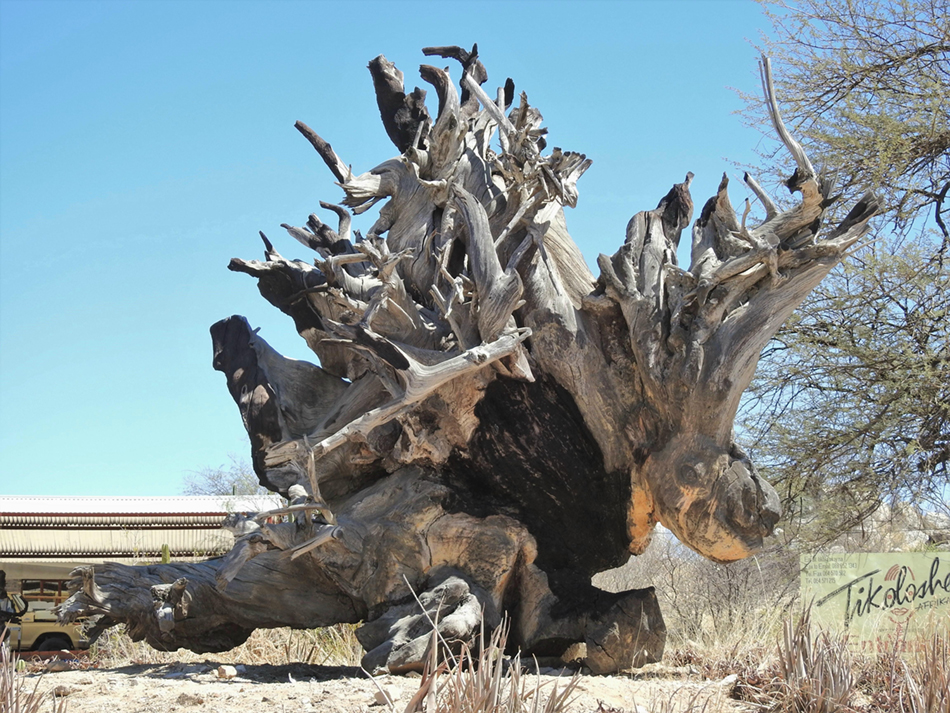
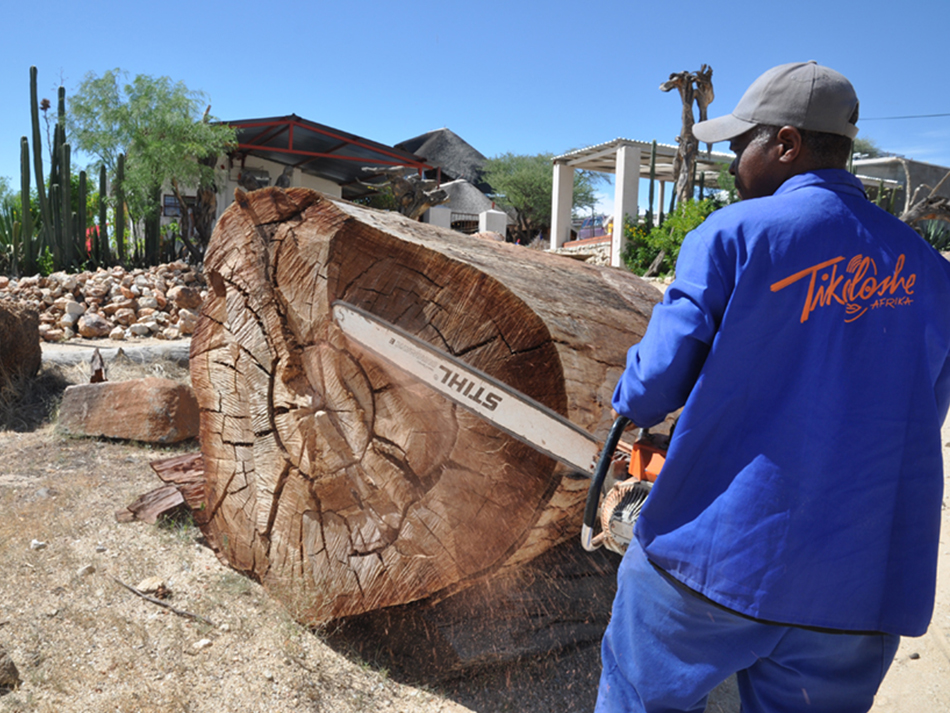
WOOD
PROVIDED BY NATURE
Tikoloshe Afrika produces artistic wood sculptures – from ten centimeters to ten meters in size, carved from weathered, dry roots and tree trunks, some of which are thousands of years old. The wood is mostly collected in the semi-desert and northern areas of Namibia. On the following pages we would like to introduce you to a selection of the types of wood we use.
Mopane
(Colophospermum mopane)/ Omusati
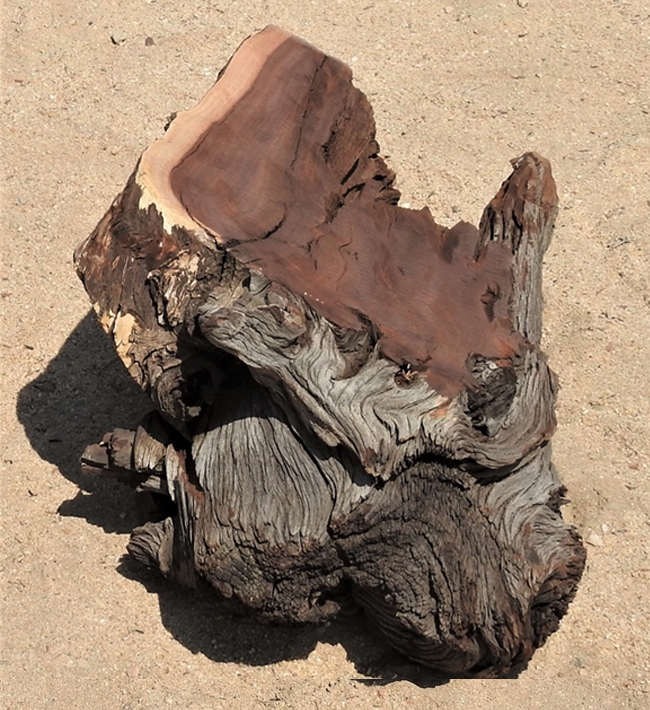
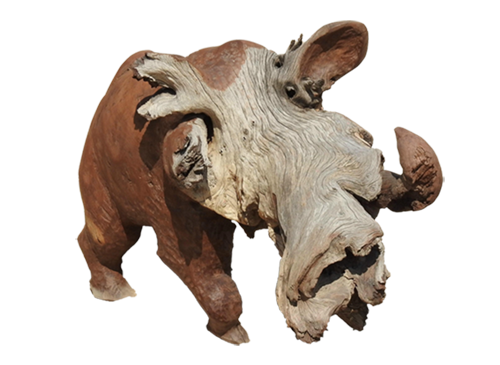
Most of our carvings are made of this wood, very heavy, dark red-brown wood with a yellowish ring on the outside. Weathered, fine outer root structure. The collected root, with its own form, is exported worldwide. It is excellent for flower arrangements and especially as decoration. Because the wood does not get rotten and release any color into the water due to its hardness, it is particularly suitable as ornamental aquarium wood. The water remains crystal clear and the root sinks to the ground due to its weight.
Leadwood
(Combretum imberbe) Omumborombonga
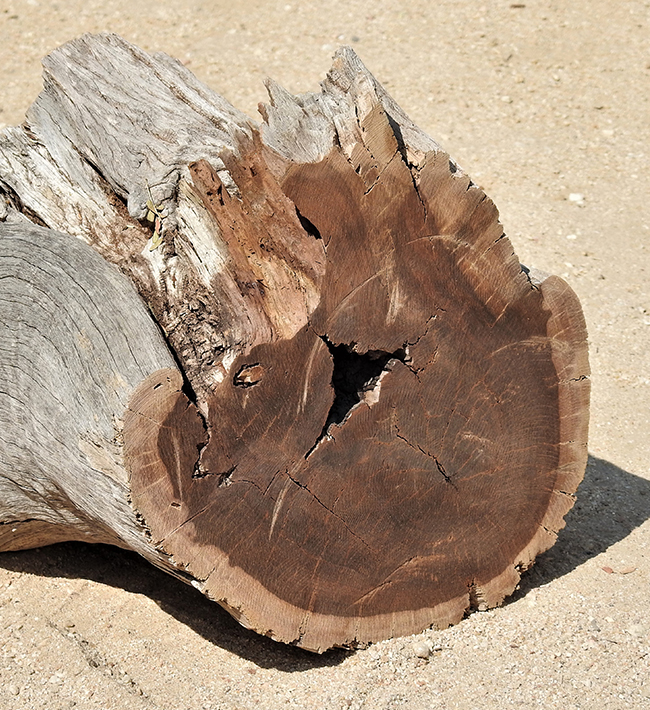
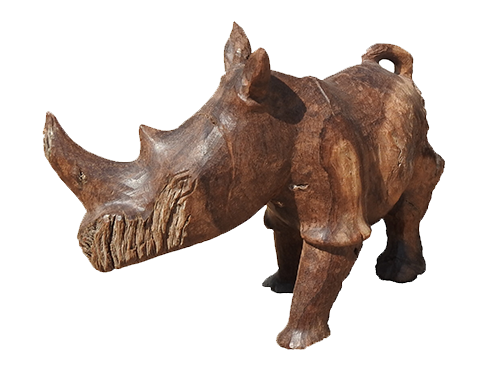
Hereros and Ovambos see the tree as the source of life from which the first humans, cattle, sheep and wild animals originated.
Weight: Exceptionally heavy wood; sinks in water. When you hit a big piece with a hammer, it sounds like metal: Ironwood.
Color: dark brown, outside yellowish-beige.
Growth: Looks dead in dry areas during the winter months, but sprouts again in the rainy season and gets small green leaves.
Tambotie
(Spirostachys africana) / Orupapa
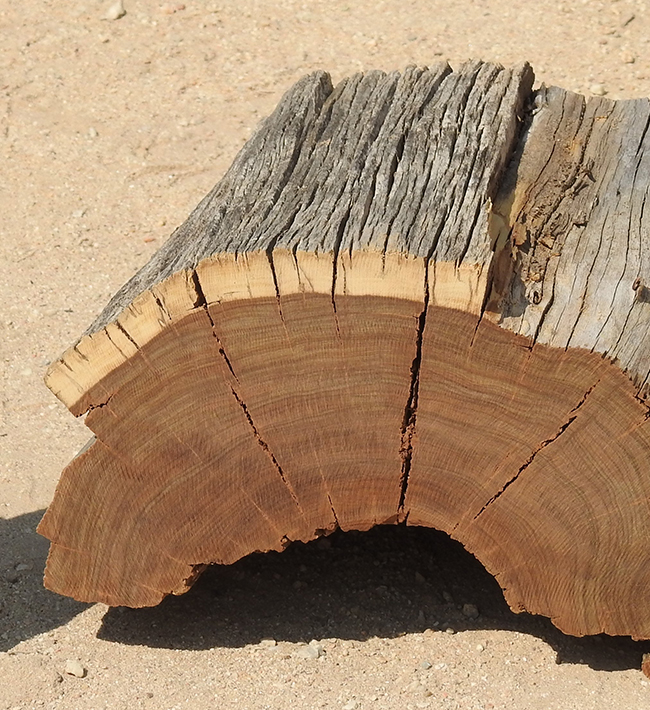
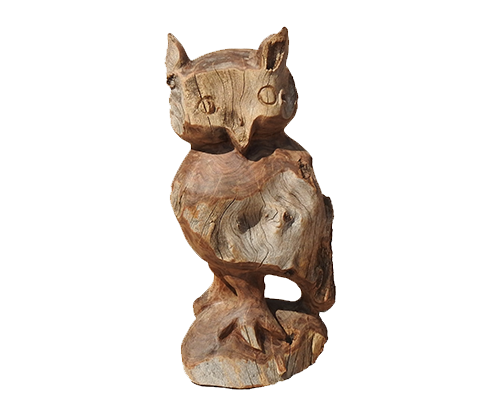
Up to eight meters high, straight growing tree. Tambuti is preferred for fence posts. The wood has a strong, unmistakable smell. Freshly cut, a poisonous, milky juice escapes. The eyes of the carver also begin to water when working on the dry root. Because of the poisonous vapors it is not suitable as barbeque firewood. Tambuti is a heavy, firm wood of medium brown color with a smoky, grey-black grain.
Camel Thorn
(Acacia erioloba) / Omumbonde
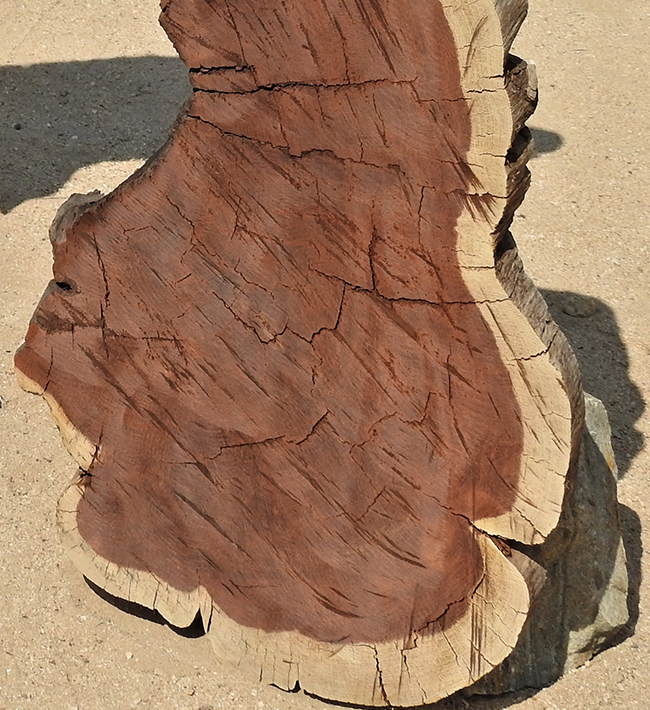
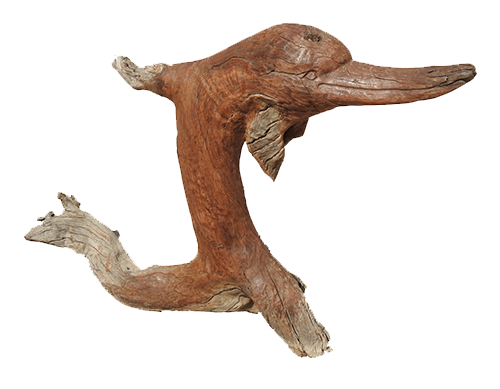
Typical Namibian tree (German South West Song). Excellent for smoking and grilling (Braaivleis). Very heavy, brittle wood. Mainly suitable for large and compact carvings. Color: dark red core, light yellow outside, nearly the same like Mopane. All of the wood has an ivory grain.
Mustard Tree
(Salvadora persica) / Kangongo

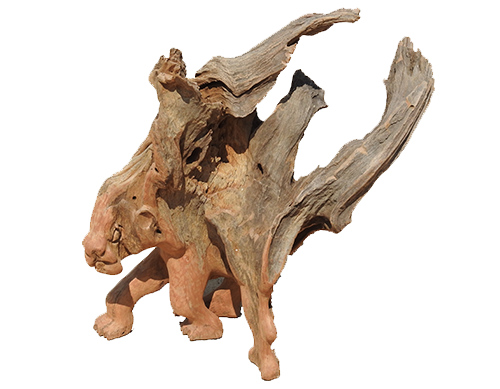
Also known as curry bush, because the small, slightly orange seeds smell like it and are edible. Color: Red-grey to pink wood with a grey weathered, rough exterior structure. Partially wart-like. Lion bush is a rather soft, light wood, which can also beworked well with a knife.
Worm-cure albizia
(Albizia anthelmintica) / Aru
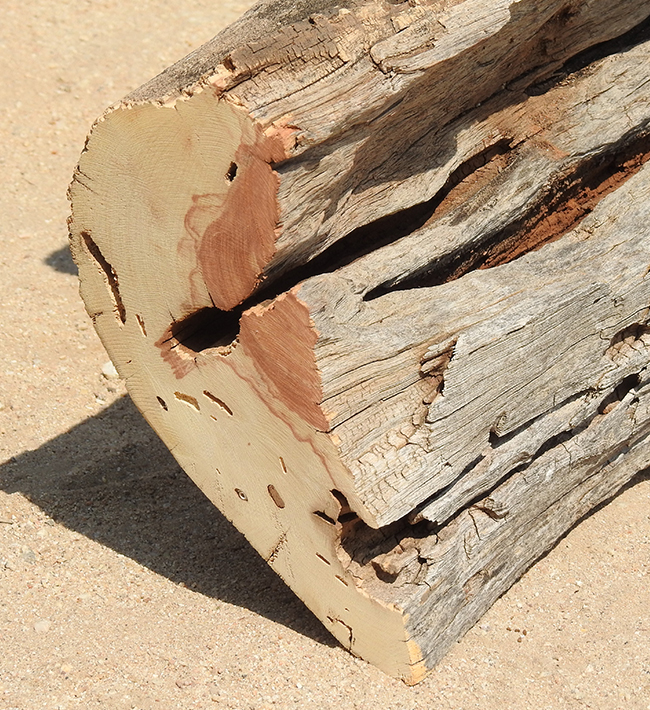
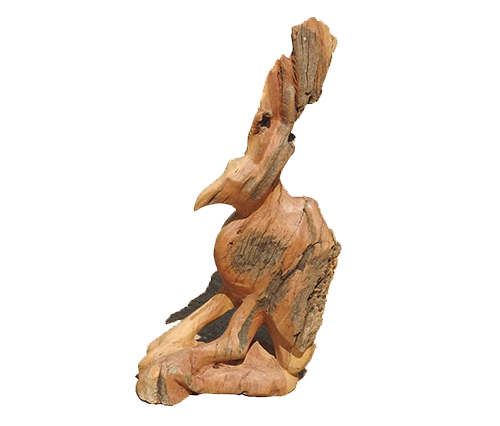
The finely grated bark is used to treat stomach worms in humans and animals. It is a light yellow wood with a mostly small red core and various red inclusions. Because it is a very soft wood, it’s easy to work with the knife.
Rose Gum
Eukaliptus
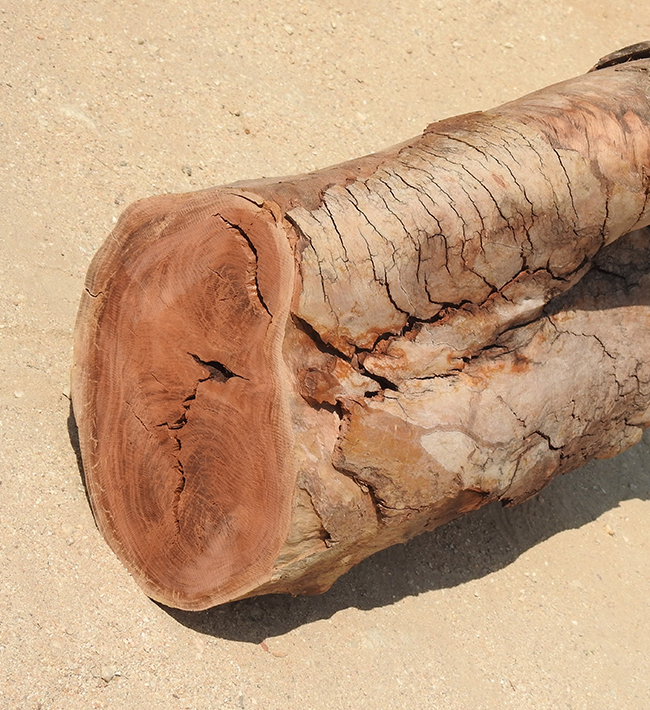
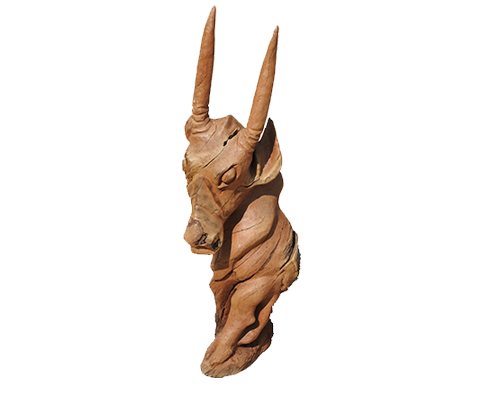
Introduced from Australia for the production of straight, fast-growing wood. Used as support wood in the mine shafts of Tsumeb. Needs a lot of water and is therefore nowadays partly deforested again. Rarely in Australia nowadays, asitis preferably used in furniture processing. Red wood with star-shaped cracks from the centre. Large logs are excellent for groups of chairs, tables and tabletops.
Prosopis Tree
Prosopis (Prosopis chilensis)
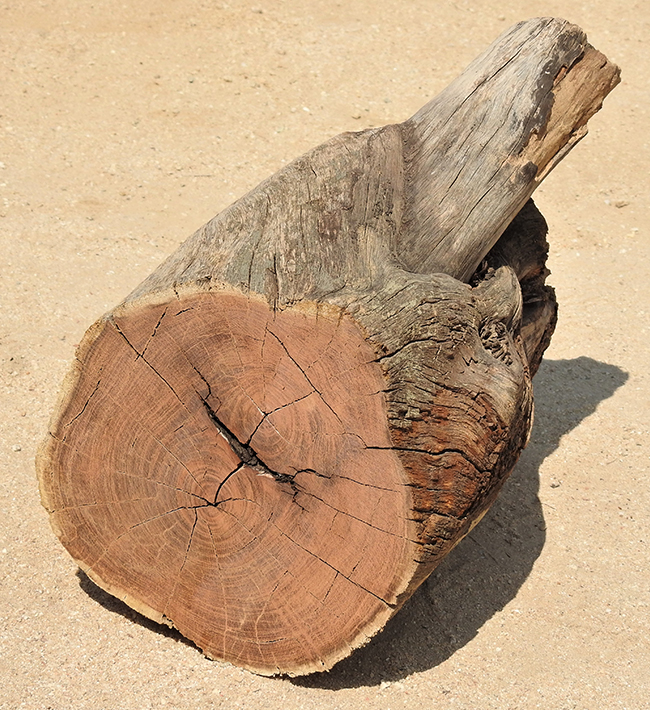
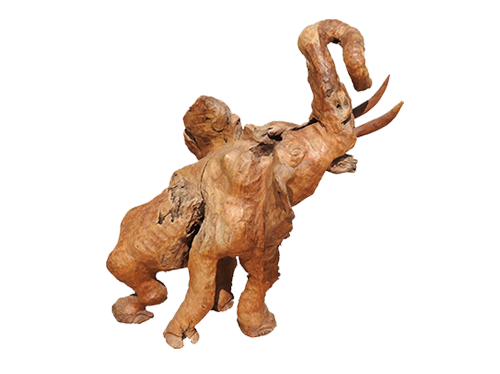
Introduced by Mexico because of its nutritious, sweet pods for use mainly as animal feed, especially in dry seasons. The wood is very resistant and an excellent shade. Unfortunately, it displaces the native vegetation. The middle brown core has a strong yellow border. It is a very tough wood and is therefore preferred in America for rifle stocks. Prosopis chilensis was brought from South America to South West Africa in 1912 by the German government botanist Kurt Dinter. It is fought today as well as eucalyptus because of its enormous water consumption.




